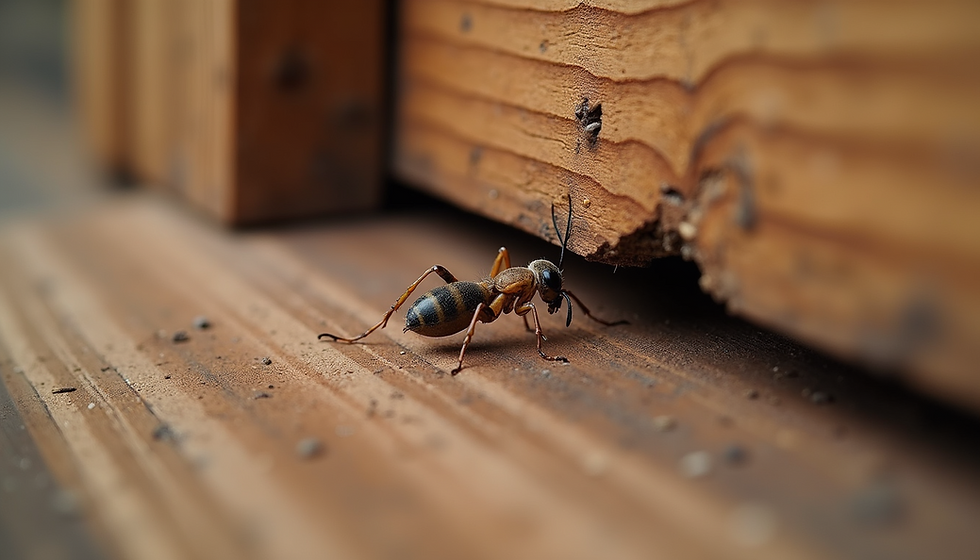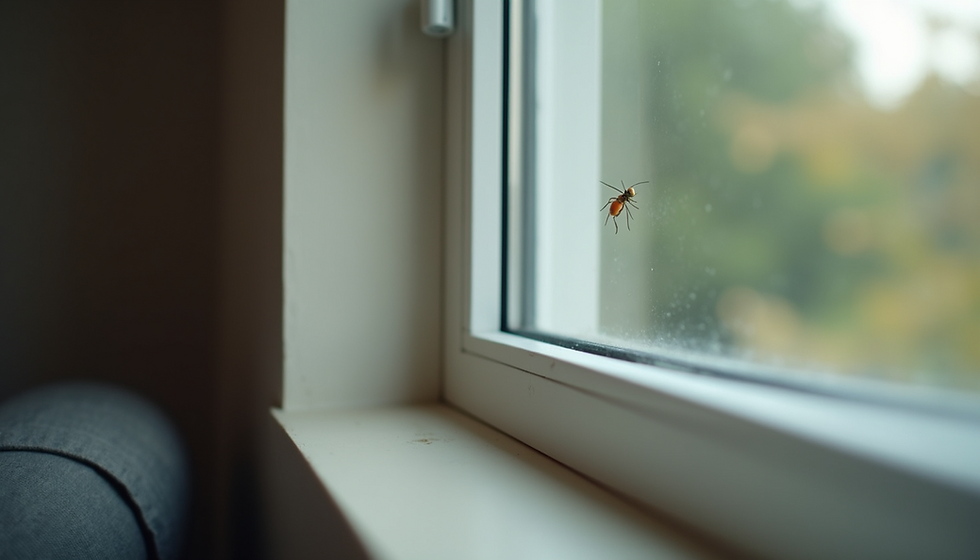Top Signs You Might Have a Pest Problem at Home
- Gorilla Pest

- Sep 29
- 4 min read
Pests can invade your home quietly, causing damage and discomfort before you even realize they are there. Identifying the early signs of a pest problem is crucial to prevent costly repairs and health risks. This guide will help you recognize the most common indicators of pest infestations and provide practical advice on what to do next.
Common Signs of a Pest Problem in Your Home
Pests come in many forms, from insects to rodents, and each leaves behind unique clues. Knowing what to look for can save you time and money.
Droppings and Urine Stains
One of the most obvious signs of pests is the presence of droppings or urine stains. Rodents like mice and rats leave small, dark droppings near food sources, in cupboards, or along walls. Cockroaches also leave droppings that look like tiny black pepper grains.
Urine stains may appear as yellowish marks or spots, often accompanied by a strong, unpleasant odor. These stains can be found in hidden corners, under sinks, or near entry points.
Gnaw Marks and Damage
Rodents and some insects chew on wood, wires, and packaging materials. Look for:
Gnaw marks on furniture, baseboards, or electrical wiring.
Holes in walls, floors, or food packaging.
Damaged plants or leaves if you have indoor greenery.
Gnawing on electrical wires is especially dangerous as it can cause short circuits or fires.
Unusual Noises
Hearing scratching, scurrying, or squeaking sounds inside walls, ceilings, or under floors can indicate the presence of rodents or other pests. These noises are often more noticeable at night when the house is quiet.
Sightings of Live or Dead Pests
Spotting a live pest is a clear sign of infestation. Common pests include:
Ants marching in lines.
Cockroaches scurrying away when lights turn on.
Mice or rats darting across rooms.
Flies buzzing around food or trash.
Dead pests, shed skins, or insect wings are also signs that pests are or were present.

How to Identify a Pest Problem Early
Early detection is key to controlling pests before they multiply. Here are some tips to help you spot a pest problem early:
Regular Inspections
Make it a habit to inspect your home regularly, especially in areas prone to pests such as:
Kitchen cabinets and pantry.
Basements and crawl spaces.
Attics and roof spaces.
Around windows and doors.
Look for any signs mentioned above and take notes or photos to track changes.
Monitor Food and Trash Areas
Pests are attracted to food and waste. Keep an eye on:
Crumbs or spilled food.
Open or damaged food packaging.
Overflowing trash bins.
If you notice increased pest activity around these areas, it’s time to act.
Use Traps and Baits
Setting up traps or baits can help you detect pests early. For example, sticky traps for insects or snap traps for rodents can reveal the presence of pests even if you don’t see them directly.
Pay Attention to Pet Behavior
Pets often sense pests before humans do. If your dog or cat is suddenly scratching more, pawing at walls, or acting restless, it might be due to pests like fleas or rodents.

How much should you spend on pest control?
The cost of pest control varies depending on the type of pest, the severity of the infestation, and the size of your home. Here’s a general breakdown to help you budget:
Initial Inspection
Most professional pest control companies offer an initial inspection, which can cost between $50 and $150. This inspection helps identify the pest type and infestation level.
Treatment Costs
Minor infestations (e.g., ants, small cockroach problems): $100 - $300 per treatment.
Moderate infestations (e.g., rodents, termites): $300 - $700.
Severe infestations (e.g., bed bugs, extensive termite damage): $700 - $2,500 or more.
Ongoing Maintenance
Regular pest control services, such as quarterly treatments, typically cost $100 - $300 per visit. These help prevent future infestations.
DIY vs. Professional Services
While DIY pest control products are cheaper, they may not be effective for serious infestations and can lead to recurring problems. Investing in professional services often saves money in the long run by ensuring thorough treatment.
If you live in the Waco area, consider contacting Waco pest control experts who can provide tailored solutions at competitive prices.

Preventive Measures to Avoid Pest Problems
Prevention is always better than cure. Here are some practical steps to keep pests out of your home:
Seal Entry Points
Inspect your home for cracks, gaps, and holes where pests can enter. Use caulk, weather stripping, or steel wool to seal these openings around:
Doors and windows.
Pipes and vents.
Foundation and walls.
Maintain Cleanliness
Keep your home clean and clutter-free:
Wipe down kitchen surfaces regularly.
Store food in airtight containers.
Take out trash frequently.
Avoid leaving pet food out overnight.
Manage Moisture
Pests like cockroaches and rodents are attracted to moisture. Fix leaks, use dehumidifiers, and ensure proper drainage around your home.
Landscape Maintenance
Trim bushes and trees away from your house. Remove debris and standing water from your yard to reduce pest habitats.
Regular Professional Inspections
Schedule routine inspections with pest control professionals to catch problems early and maintain a pest-free environment.
When to Call a Professional Pest Control Service
Sometimes, DIY methods are not enough. Knowing when to call a professional can save you time, money, and stress.
Signs You Need Professional Help
Persistent pest sightings despite your efforts.
Large infestations of rodents, termites, or bed bugs.
Damage to your home’s structure or wiring.
Health issues related to pest exposure (allergies, bites).
Choosing the Right Pest Control Service
Look for companies that:
Are licensed and insured.
Use safe and effective treatment methods.
Offer guarantees or follow-up services.
Have positive customer reviews.
Professional pest control experts have the knowledge and tools to handle infestations safely and efficiently.
Recognizing the signs of a pest problem early and taking prompt action can protect your home and health. Whether you choose to tackle the issue yourself or hire professionals, staying vigilant is key. If you suspect a pest problem, don’t wait - address it before it worsens.


